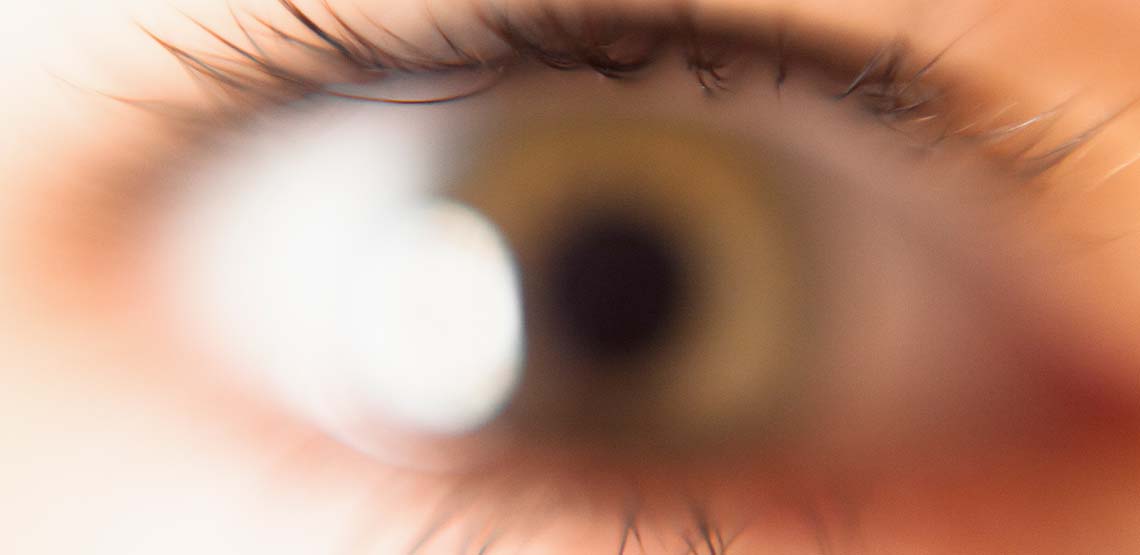What is Macular Degeneration?
Macular degeneration is a debilitating but relatively common disease affecting the inner eye; it causes varying degrees of loss of vision. If detected early it can be treated, and symptoms can be mitigated. However, at this time, macular degeneration is considered untreatable once it develops because some loss of vision will inevitably occur.
Macular Degeneration Explained
For a basic overview of the disease, let’s go inside the eye itself, behind the eyeball, to the macula, which is an area of the retina. The retina is a key player in the function of the eye. It is essentially nerve tissue responsible for sensing light and it acts as part of the camera, allowing us to see and record images, detail, light, etc. The retina is the back inside wall behind the eye, and macular degeneration affects the center part of the retina.
It is known as an age-related disease and is in fact often called age-related macular degeneration because the damage occurs as a symptom of time and a gradual wearing down of the macula.
All types and stages of this disease affect the central vision. If you imagine staring straight ahead, the center of the image would be blurred out – increasingly so, as the disease progresses. Though patients will be left with their peripheral vision, this is inherently less clear than our central vision, so those with severe macular degeneration may be categorized as legally blind.
6 Symptoms to Be Aware Of
Unfortunately, one of the reasons this disease is do devastating is that, in many cases, no symptoms are detected until the disease has gotten worse and progressed.
In the early stages, it is unlikely to experience anything, like changes to or loss of vision, which is why it is important to get regular eye exams where your doctor can check for signs of early macular degeneration.
As the disease progresses, you may experience some of the following symptoms:
- Loss of vision.
- Blurry and/or fuzzy vision.
- Distorted vision (for example, straight lines appearing to be wavy).
- Difficultly seeing in low-light settings.
- Being unable to recognize faces.
- A newly developed blind spot in your vision.
If you experience any of these symptoms, schedule an appointment with your doctor to get an eye exam.
The Different Types
There are two broad types of age-related macular degeneration, though both lead to the same ultimate result: loss of vision and possible total legal blindness.
Dry Macular Degeneration
This is also known as the atrophic type. It involves a thinning out and breaking of the macular tissue itself. A telltale sign of the dry form of macular degeneration is yellow deposits in the macula. This can get worse and the tissue can thin. Overtime, blind spots emerge and often result in worsening vision loss over time.
Wet Macular Degeneration
The wet or exudative forms are less common. It only affects around 10% to 15% of patients. This is when the blood vessels in and around the macular tissue leak blood or fluid resulting in damage to the vision. With time, this causes scarring and results in permanent central vision loss.
Stargardt Disease
Though far less common than the two primary types, a type of macular degeneration known as Stargardt disease is an inherited form of the disease and affects young people.
Target Age for Macular Degeneration
This disease largely tends to affect elderly people and is the leading cause of vision loss in those over 60 years old. In some forms, it can affect younger adults and even children.
Here are the basics you need to know to stay informed of macular degeneration and to be on the lookout for early warning signs.
Causes and Risk Factors of Macular Degeneration
The reasons for developing macular degeneration remain somewhat unclear still, but in general there are a few causes and risk factors to be aware of.
In general, it is an age-related disease meaning as you get older, past 55 especially, your risk increases, so stick to regular eye exams. Genetics also play a roll, so if someone in your family has this disease, you may be more likely to contract it as well. Females, specifically Caucasians with light colored eyes, have a higher risk than their counterparts.
Aside from the factors you cannot control, there are some you can that may play a role. Specifically, lifestyle choices like smoking, maintaining a poor diet and being obese can up your chances of developing the disease.
Treatment Options
Unfortunately, there are limited ways to treat the disease once it has developed, and ultimately it will lead to vision loss. If detected in time though, there are ways to slow the progression.
Medicine
One of the first treatment options is drugs. Specific medications are used to block the leaking of blood into the retina, thus stopping the damage and potentially even improving lost vision.
Laser Treatment
Another way to stop the leaking blood vessels is with a laser, which can damage the problematic blood vessels.
Early Detection
Otherwise, the best treatment is early detection, meaning regular eye checkups, plus adopting healthy lifestyle habits like quitting smoking, staying active and making smart nutrition choices.
